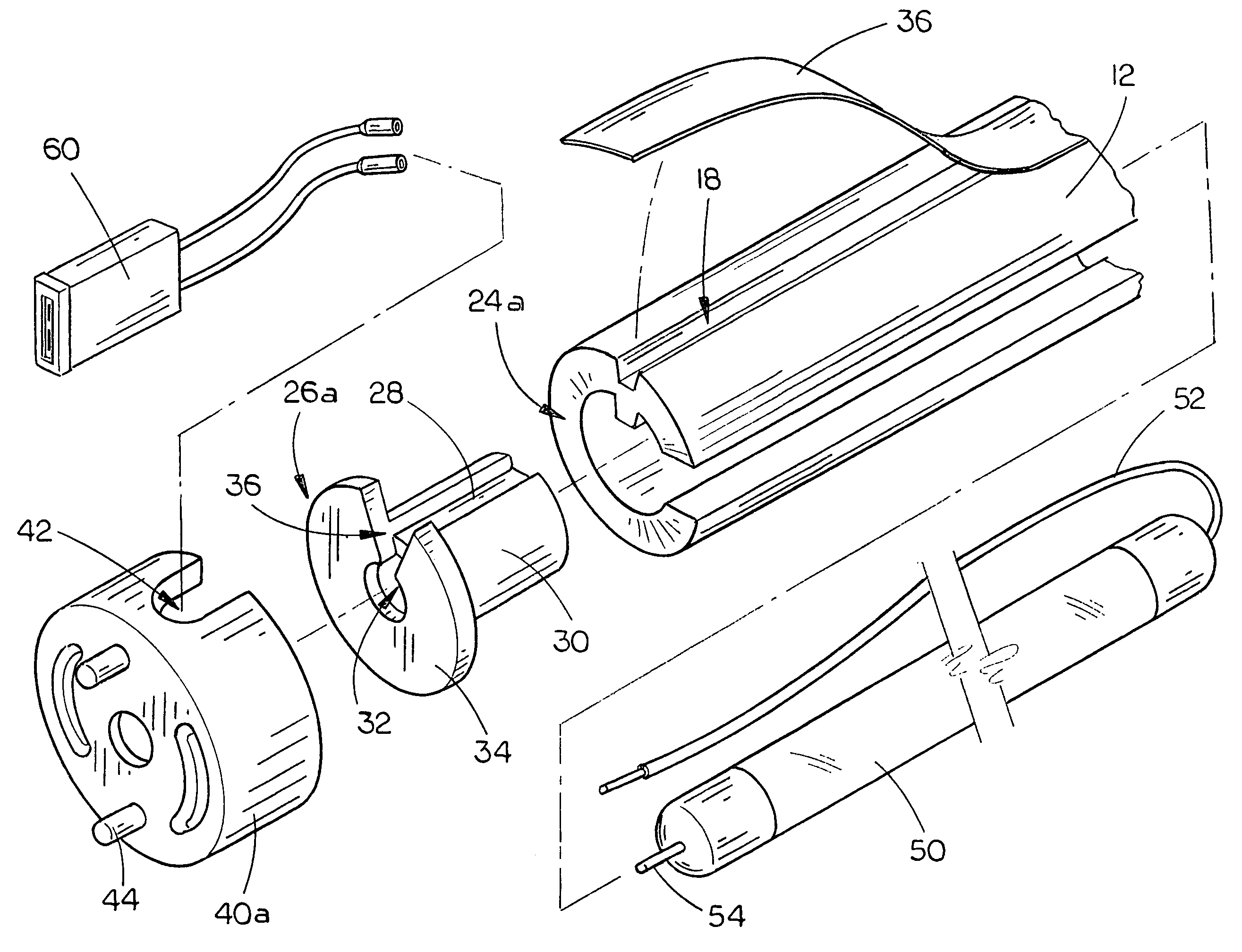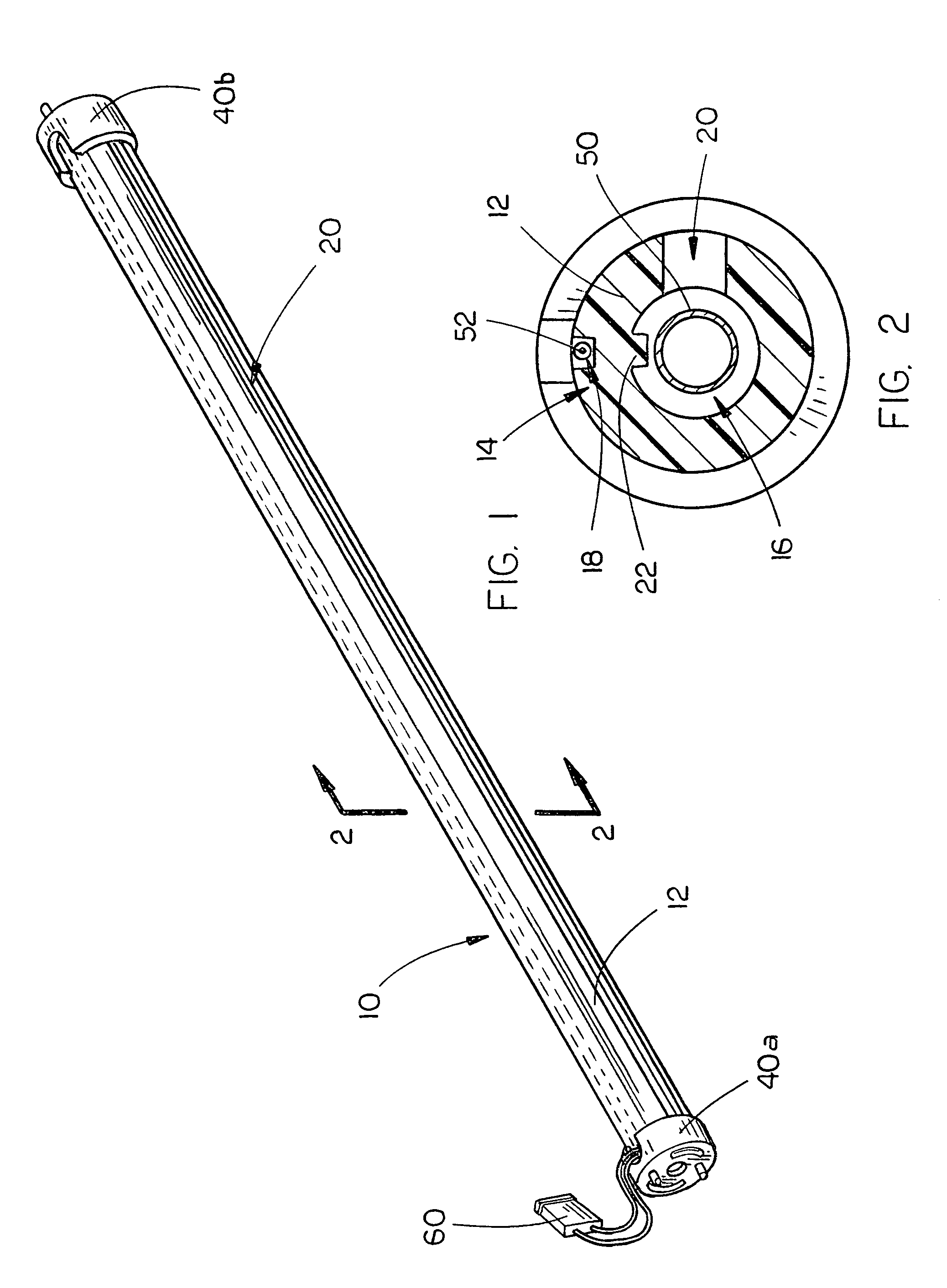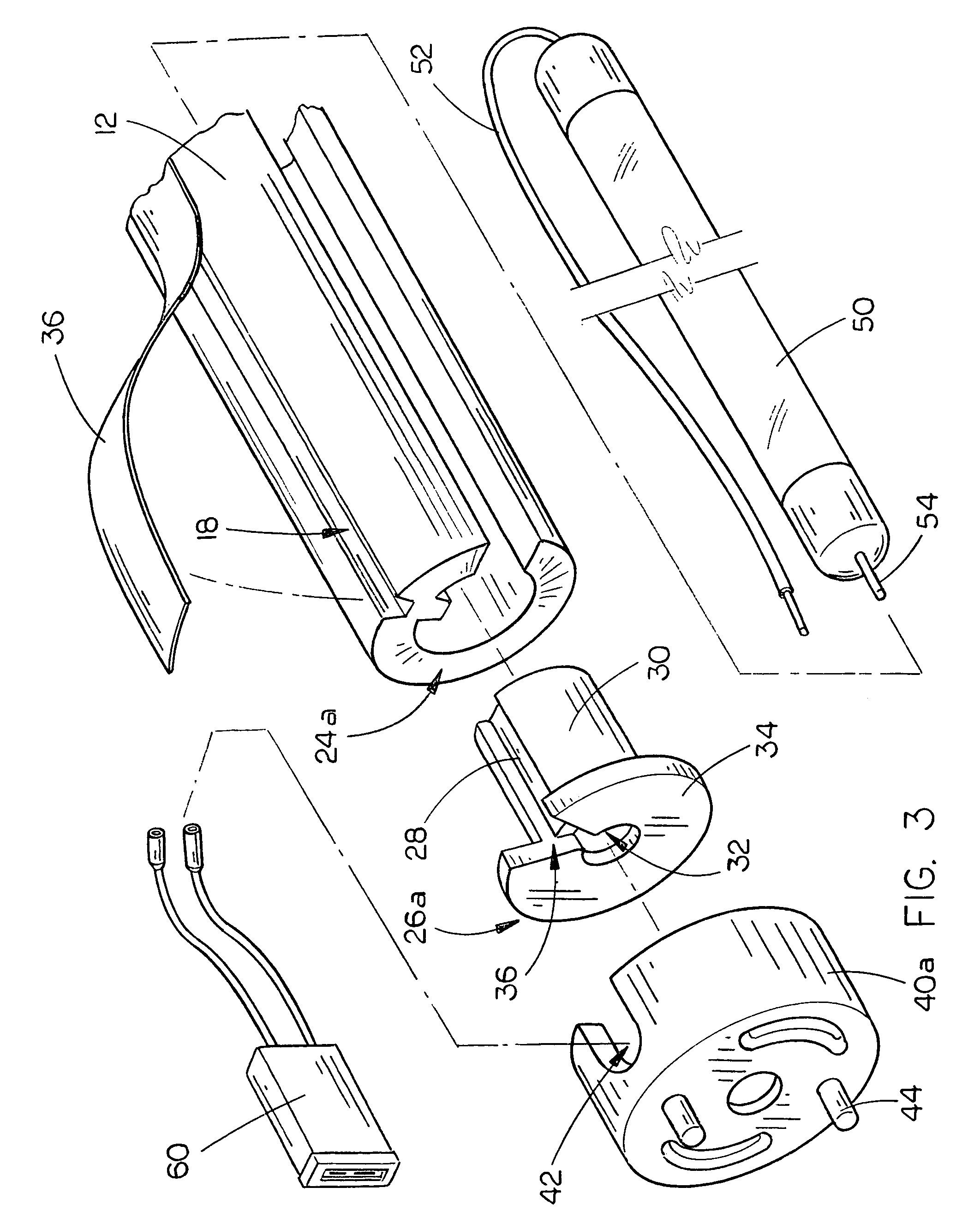Support and enclosure structure for fluorescent light bulbs
a technology for supporting and enclosing structures, which is applied in the direction of light fastenings, transportation and packaging, lighting and heating equipment, etc. it can solve the problems of affecting excessive heat emitted by bulbs, and glass tubes which are very prone to breakage, so as to facilitate the removal and replacement prolong the lifespan of fluorescent light bulbs, and quick and easy removal
- Summary
- Abstract
- Description
- Claims
- Application Information
AI Technical Summary
Benefits of technology
Problems solved by technology
Method used
Image
Examples
Embodiment Construction
[0019]The support and enclosure structure 10 for fluorescent light bulbs of the present invention is best shown in FIGS. 1–4 as including an elongated hollow tube 12 which, in the preferred embodiment, would have a length of approximately six inches to four feet, and a diameter of approximately one-half inch to three inches, depending on the bulb size which is to be retained within the support and enclosure structure 10. The thickness of outer wall 14 would vary accordingly, although in any circumstance it is preferred that the outer wall 14 be of sufficient thickness to provide structural rigidity to the hollow tube 12 to provide appropriate protection for the fluorescent light bulb 50 retained within the hollow tube 12. It is further preferred that hollow tube 12 be constructed of a sturdy plastic or resin-based material which would be molded into the hollow tube shape by any standard plastic formation technique used in the art. Furthermore, it is preferred that the hollow tube 12...
PUM
 Login to View More
Login to View More Abstract
Description
Claims
Application Information
 Login to View More
Login to View More - R&D
- Intellectual Property
- Life Sciences
- Materials
- Tech Scout
- Unparalleled Data Quality
- Higher Quality Content
- 60% Fewer Hallucinations
Browse by: Latest US Patents, China's latest patents, Technical Efficacy Thesaurus, Application Domain, Technology Topic, Popular Technical Reports.
© 2025 PatSnap. All rights reserved.Legal|Privacy policy|Modern Slavery Act Transparency Statement|Sitemap|About US| Contact US: help@patsnap.com



